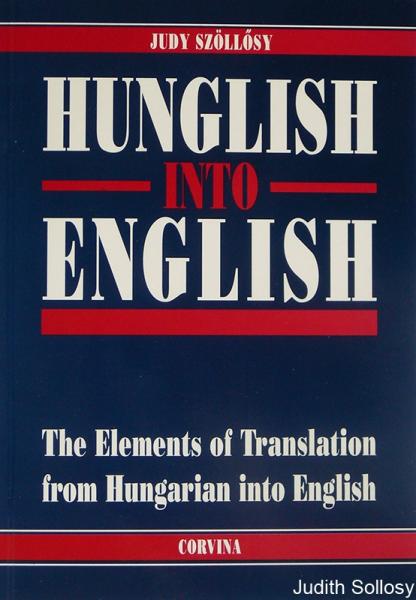
Judy Szöllősy
 The Elements Of Translation From Hungarian Into English, Corvina, Budapest, 2007
The Elements Of Translation From Hungarian Into English, Corvina, Budapest, 2007
Author's Preface
‘Tis very Dangerous Tampring with a muse:
The Profit's small, and you have much to lose...
Roscommon, "Essay on Translated Verse," 11. 284-285.
This basic guide to the elementary principles of translating nonfiction texts from Hungarian into English came into being because after years of teaching, translating, editing and reading translations for my own pleasure, it has occurred to me that many of us engaged in translation, professionally or otherwise, as well as those just learning this fascinating and intricate art, often go about it without understanding how two languages and cultures - in this case Hungarian and English - interact in the process of translation, sometimes helping, at others interfering with each other, being at cross purposes, as it were. Often, we do not ask ourselves an adequate amount of questions about the nature of culture, language, styles of thinking, mental habits, and translation itself - not to mention the meaning of meaning - and so end up groping in the dark, frustrating our readers as well as ourselves. Learning to ask the right questions is half the battle. Finding the answers and putting them into practice is the other half.
Throughout the years I have seen the work of my students go astray for lack of simple guidelines, and I have seen translated texts lose too much in the process of translation, becoming boring from within, as it were. I have attempted to help where I could, partly in the classroom and partly out of it, and it fills me with a sense of pride and accomplishment to think that I may have been of some help, possibly even a source of inspiration, to a number of ex-students, now practicing translators. This book is therefore gratefully dedicated to them, past, present, and future.
Judy Szöllősy
September, 2006 Budapest